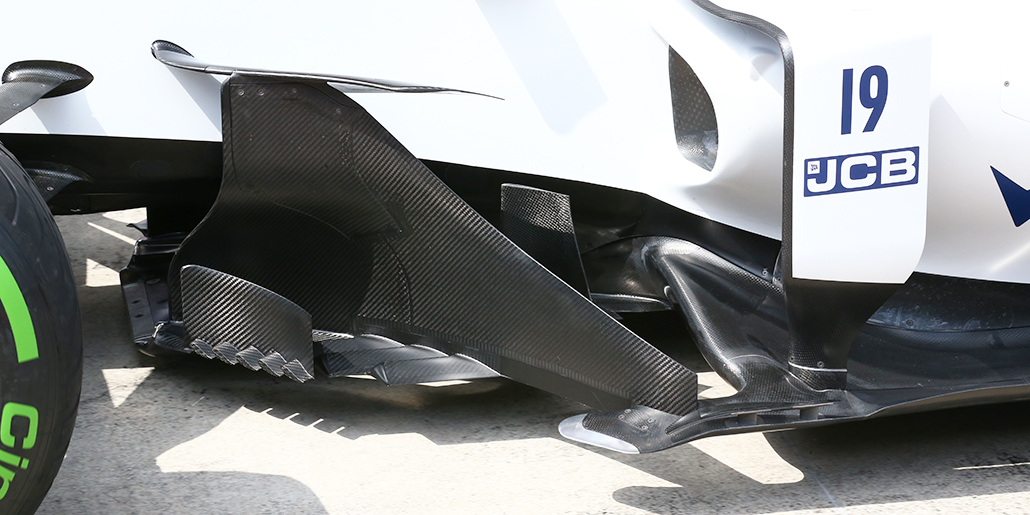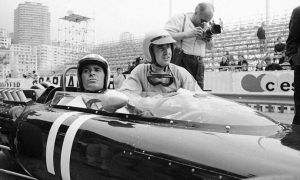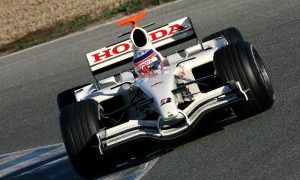WILLIAMS UNLEASHES BIGGEST UPGRADE OF THEM ALL
While Williams’ bargeboards had been fairly conventional until last weekend, the British outfit introduced a more complex design at Spielberg. The bargeboard’s shape is now more triangular with an indented base that comprises of many winglets (see white arrows). One can see here further evidence of Mercedes’ segmentation philosophy whereby teams seek to control airflows tightly by multiplying the number of cuts and elements. What’s more, the fins attached to the smaller vane are similar to what Sauber introduced at the Chinese Grand Prix earlier this year.

The top of the bargeboard connects to the front-end bodywork thanks to a profiled wing (see blue arrows), which extends backwards until it is level with the rearview mirror. The Mercedes W08 features a similar element.
One can suppose that the curved outline of the wing guides the airflow to the lower sidepod area in order to optimise airflow circulation towards the rear of the car. This might also be a flow conditioner for the sidepod air inlets.
One could note that Red Bull also gave its bargeboards another slight tweak. It should be pointed out that the bargeboard does not fulfil a major structural purpose, which means the part can be modified quite easily and in a cost-effective manner. This can explain why teams have been updating their bargeboards on a frequent basis since the start of the season.

 '
'





